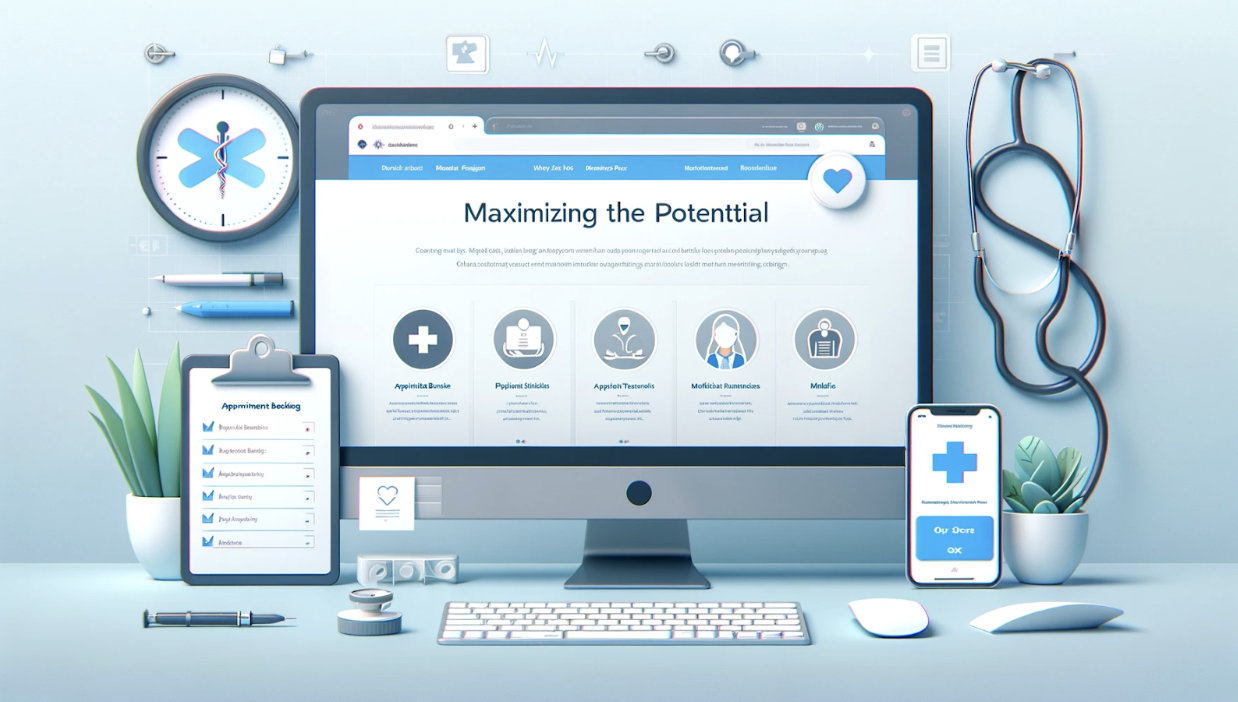1. Make User Experience a Priority
In today’s digital age, patients increasingly turn to online resources for healthcare information and services. A seamless, user-friendly website design is paramount to retaining their interest and facilitating easy navigation. Incorporating clear, prominent call-to-action buttons like “Book Appointment” or “Contact Us” on every page seen on every device ensures patients can effortlessly access services.
2. Craft a Clear and Compelling Brand
Your website should distinctly articulate the services you provide and your unique value proposition in the healthcare field. A simplified, impactful brand message is crucial. Integrating elements like logos, color schemes, imagery, and video can cohesively represent your practice’s ethos and target audience.
3. Collaborate with Web Designers to Realize Your Vision
The appearance of your website significantly influences patients’ perceptions and there are many paths you could take. Partnering with a skilled web designer to realize a vision that authentically represents your practice is vital. Effective communication of your practice’s core values and goals is key to achieving a design that resonates with your brand identity.
4. Make Sure Your Website Works Well on Mobile
Given the growing reliance on mobile devices, your website must be optimized for mobile use. A responsive design ensures a positive user experience across all devices and is critical for maintaining high search engine rankings. Google will not rank you highly if your website is not optimized for mobile.
5. Offer Value-Added Content
Beyond basic practice information, enrich your website with blogs, patient testimonials, and integrations like Electronic Medical Records (EMR). This approach not only educates your audience and positions you as a thought leader, it also improves your website’s visibility in search results.
6. Streamline Appointment Scheduling with Online Tools
Integrate online scheduling options and lead forms on your website to facilitate easy appointment bookings. This feature not only enhances patient experience but also improves office efficiency. Make it as EASY as possible for people to reach you. That includes a clickable phone numbers, email, and form clearly displayed and easily found on your website.
7. Incorporate Patient Testimonials for Authentic Engagement
Patient testimonials provide social proof and build trust with potential new patients. Showcasing stories and experiences of existing patients can foster a deeper connection with site visitors.
8. Promote Newsletter Subscriptions for Ongoing Engagement
An email newsletter is an effective tool for keeping patients informed about your practice. Encourage visitors to subscribe to stay updated on new services, health tips, and office updates. Regular newsletters help maintain patient engagement and drive repeat visits to your website.
Conclusion: Elevating Your Practice with Professional Web Design
Invest in professional web design to meet the specific needs of a top-tier medical website. This not only enhances your online presence but also contributes to the growth and success of your practice. Learn more about how Native Gains can help you with a professional website design.


